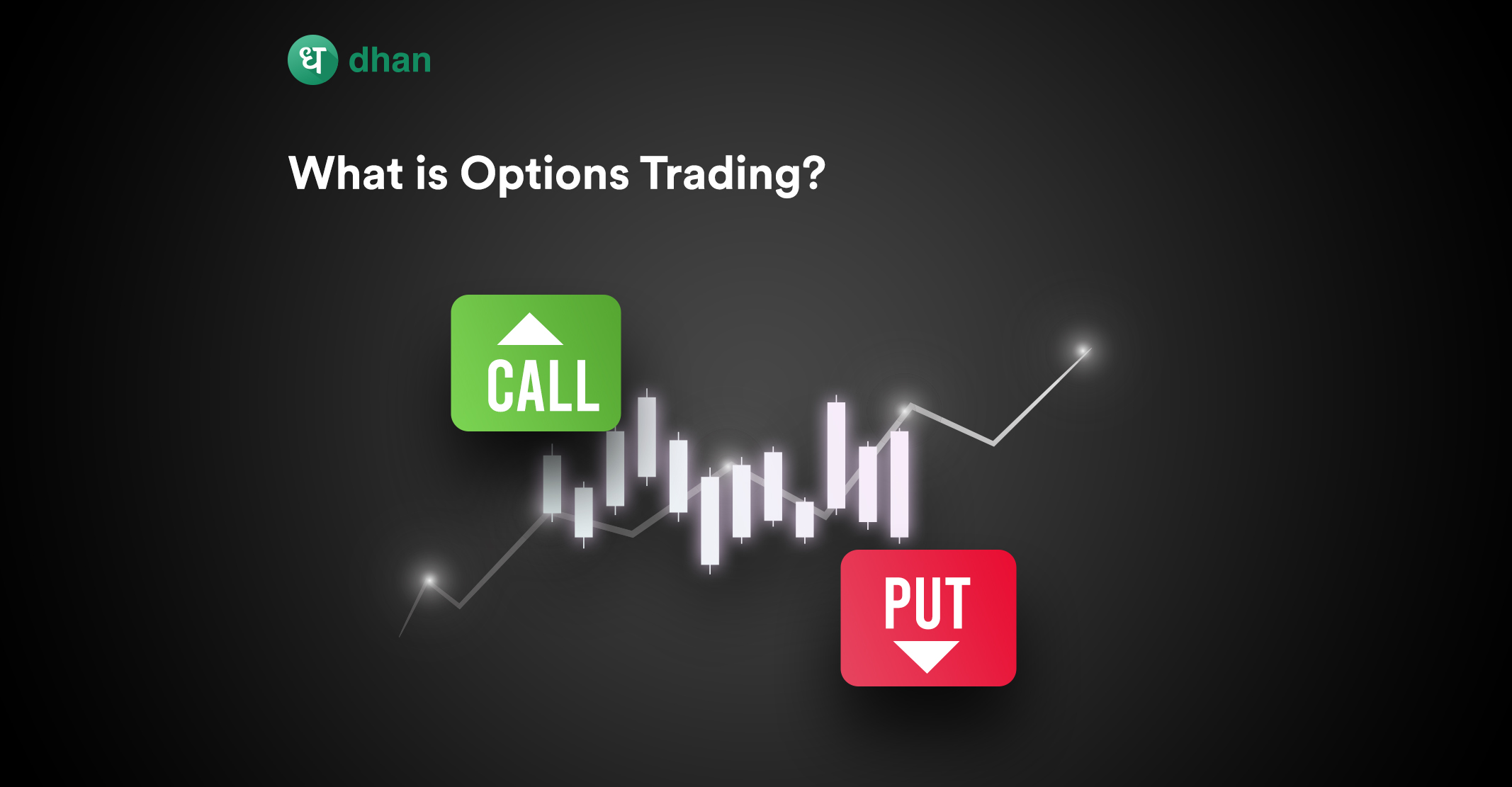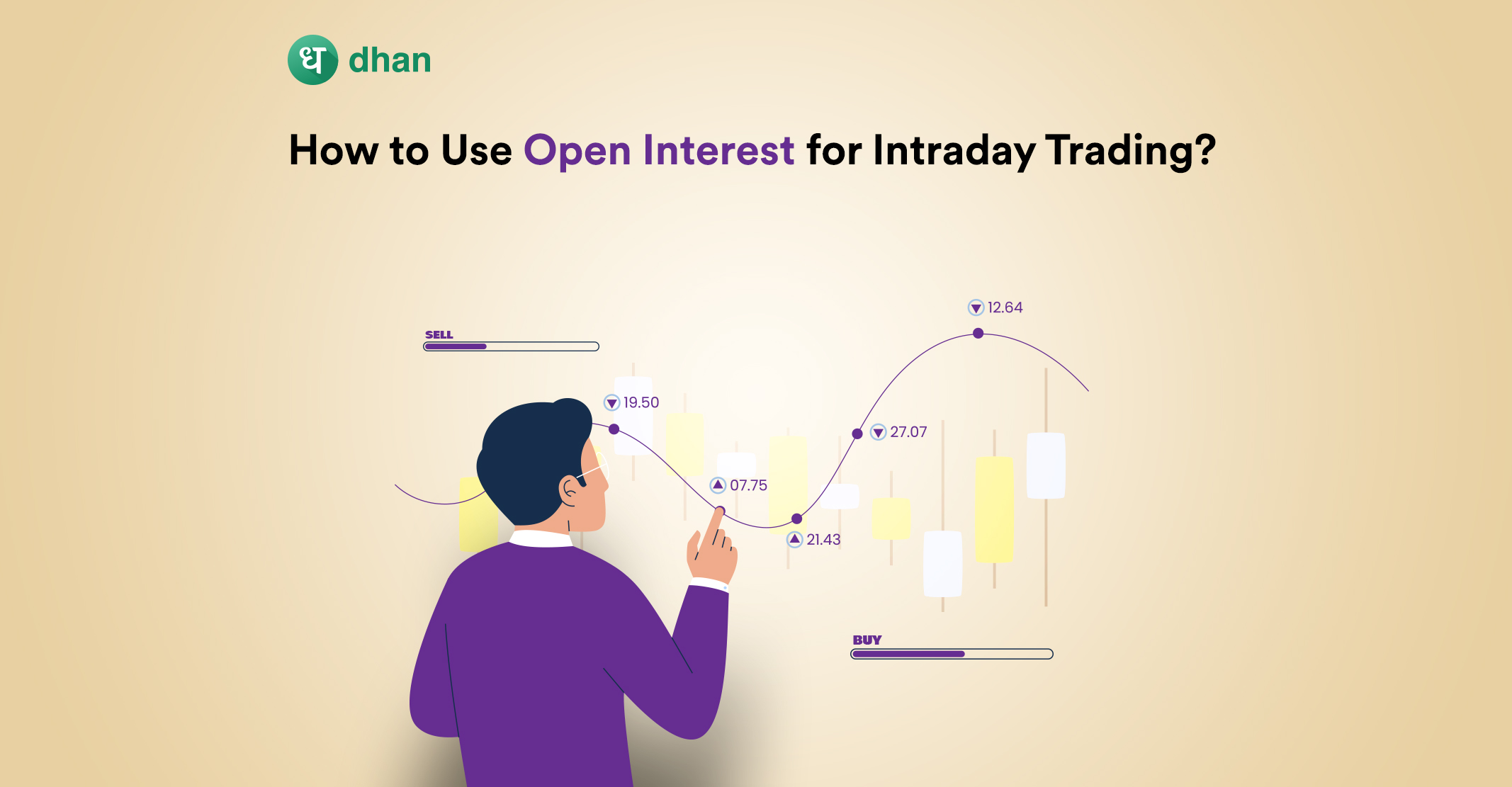Options trading is steadily becoming one of the most popular avenues to create wealth in India. In fact, data suggests that there was a whopping 51% jump in the number of index options traders between June 2020 & March 2021.
That’s not all…
Stock options traders also grew by 26% during the same period. There are multiple reasons for this. But we’ll get to those towards the end of the blog. First, let’s start with what is options trading, how it works, and the different types of options available for trading in India.
What is Options Trading?
Options trading allows you to obtain the right to buy and sell securities at a predetermined price and date. Securities in options trading could be anything from stocks to commodities and currencies.
Options are traded in the form of contracts that can expire daily, weekly, or monthly. You’re not obliged to take delivery of the underlying security in options trading, unless you choose to exercise the option.
Exercising an option is to go through with the predetermined action (buy or sell), price, and date. Once an options contract expires, you can either exercise the option or let it expire worthless.
In essence, the definition of options trading for beginners is: trading contracts that give you the right but not the obligation to buy or sell underlying securities at a pre-agreed price and date.
What are the Different Types of Options in Trading?
You’ll come across two types of options when trading derivatives: call option and put option. Each option is designed to give you a specific right that you can choose to either trade or exercise.
What are Call Options?
Think of call options as “buy options” that allow you to own the underlying security at a predetermined price and time. You can buy a call option at the strike price that is also known as the exercise price.
There are two ways or styles within call options when it comes to exercising the contract:
- American-style call option: allows you to buy the underlying asset on or before the expiration date
- European-style call option: allows you to buy the underlying asset only on the expiration date
In India, you can only trade call options in the European-style.
What are Put Options?
Put options essentially give you the right to sell the underlying security at a predetermined price and time. When it comes to put options, the strike price is the selling price of the contract.
There are two styles when it comes to exercising a put option:
- American-style put option: allows you to sell the underlying asset on or before the expiration date
- European-style put option: allows you to sell the underlying asset only on the expiration date
Just like call options, only European-style put options are available for trade in India.
How Options Trading Works
First thing first, you’ll need to open a trading account for options trading. After that, you’ll need to understand the essentials of options trading like managing or reversing positions.
Unlike stocks, you don’t need to actually own the underlying security of an options contract to trade it. This is where it gets interesting. You can buy & sell a call option (buy option) or put option (sell option).
1. Buying a Call Option
Buying a call option allows you to obtain the right to own whatever underlying security is mentioned in the options contract. You’ll have to pay a premium to buy a call option.
This, of course, comes with an expiration date. Any of these scenarios may arise when buying a call option:
- Price increases: Buyer may exercise option. Premium subtracted from price differential. Buyer makes a profit.
- Price stays constant: Option expires worthless. Seller keeps the premium.
- Price drops: Option expires worthless. Seller keeps the premium.
2. Selling a Call Option
Another trader will acquire the right to own the underlying security if you sell a call option. This also comes with an expiry and the seller of the call option will set a premium per share.
Depending on the price movement, a trader might find themselves in these scenarios:
- Price stays constant: Option expires worthless. Seller keeps the premium.
- Price drops: Option expires worthless. Seller keeps the premium.
- Price increases: Buyer may exercise option. Difference between buy and sell price of security subtracted from premium.
3. Buying a Put Option
Buying a put option will give you the right to sell the underlying security. The other party will have to pay you the strike price mentioned in the contract if you decide to exercise the option.
This also comes with an expiry. Furthermore, these three scenarios are plausible when trading put options
- Price reduces: Buyer can exercise the option. The other party has to pay the strike price. Buyer makes a profit.
- Price stays constant: Buyer could exercise option. Or, option may expire worthless.
- Price increase: Option expires worthless. Buyer loses money in the form of a contract premium.
4. Selling a Put Option
Selling a put option gives you the right to buy an underlying security. This options contract comes with an expiry too. The question here is why someone would sell a put option when they can simply buy a call option.
One of the reasons could be the premiums that selling a put option could fetch. If it is more lucrative than buying a call option, then it is theoretically plausible to sell a put option.
Either way, these scenarios may occur:
- Price reduces: Put seller loses premium. Options expire worthless.
- Price stays constant: Seller could exercise option. Or, option may expire worthless.
- Price increase: Put seller keeps the premium. Buyer won’t exercise option.
Popular Options Trading Strategies
Here are some of the most popular options trading strategies explained in simple words.
1. Straddle Option Strategy
In a straddle strategy, a trader buys call and put options for the same security with the same expiry date at the same strike price. This is done when price movements are expected but their direction is unknown.
You may have guessed by now that a straddle strategy is designed to generate as much returns as possible. But it can only be profitable when the “win” is higher than the premium paid.
2. Iron Condor Option Strategy
The iron condor strategy involves buying two call options and two put options with the same expiry at four different strike prices. But there is a difference in the call and put options being bought.
One call option is long and the other call option is short. Similarly, one put option is long and the other is short. The goal of the iron condor strategy is to average out the strike prices to generate maximum returns.
3. Strangle Option Strategy
A strangle option strategy involves buying call and put options for the same security at the same price and expiry date. Unlike a straddle strategy, there is a directional bias in a strangle options strategy.
Essentially, a trader is certain that a security will move in a particular direction but would like to be protected against the opposite direction anyway.
4. Butterfly Option Strategy
A butterfly option strategy looks to benefit from neutrality. A trader using this strategy will likely buy four options contracts that have the same expiry.
However, the four options will have three strike prices, all different from one another:
- A higher strike price
- A neutral strike price (at the money)
- A lower strike price
Pros & Cons of Options Trading
| Pros of Options Trading | Cons of Options Trading |
| Potentially lucrative returns | Significantly risky |
| Low investment amount | Complicated investment |
| Option to exercise or do nothing | Requires technical expertise |
Conclusion
Options trading allows you to obtain the right without the obligation to buy or sell underlying securities at a pre-agreed price and date. This is carried out by trading options contracts.
There are two main components of an options contract: calls and put options. A call option is the right to buy while a put option is the right to sell underlying securities of an options contract.
To get started, you’ll need to open a trading account with a stockbroker online.
Happy investing!
For more interesting stories on derivatives like futures and options, read these blogs:
- Stocks vs Derivatives – Understand the Basic Difference
- What is Option Chain – How to Use Option Chain for Trading?
- Gold Mini Options – Opportunity for Traders?
- Difference Between Buying a Put vs Selling a Call
Get ready for a powerful trading experience designed especially for F&O Traders ⚡
FAQs on Options Trading in India
Q. What is the meaning of options in trading?
Options are derivative contracts that give you the right but not the obligation to buy or sell specific securities like stocks, commodities, currencies, and others at a pre-agreed price and date.
As a derivative contract, options derive their value from the underlying security. Options can be exercised on the pre-agreed date or you could let them expire worthless. In order to buy an option, you’ll have to pay a premium, regardless of whether or not you want to exercise the option on expiry.
2. What are the different types of options in stocks?
There are two types of options in stock trading: call and put. A call option gives you the right (but not the obligation) to buy the underlying stock. A put option gives you the right (but not the obligation) to sell the underlying stock.
Both call and put options can be bought or sold. A premium has to be paid to buy an options contract, regardless of the type of option involved.
3. How do I start trading options?
You can start trading options by opening an account with Options Trader by Dhan, India’s first dedicated app for F&O. Best part? You can open an account in just a few minutes! Tap to begin: Start Trading Options
Get ready for a powerful trading experience designed specially for F&O Traders!
Disclaimer: This blog is not to be construed as investment advice. Trading and investing in the securities market carries risk. Please do your own due diligence or consult a trained financial professional before investing.




Comments are closed.